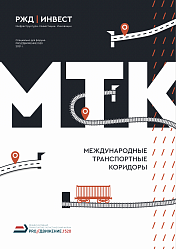Behind the large-scale engineering construction is the surge in freight demand and the shortage of capacity. Chekunkov explained that, currently, Russia has a serious shortage of transportation capacity in railways, border ports and ports, and the annual shortage of transportation capacity exceeds 70 million tons. Under the current situation, the Sino-Russian trade volume has increased, and the flow of goods has shifted to the south and east, and this shortage is likely to double.
Russian Deputy Prime Minister and Presidential Plenipotentiary to the Far Eastern Federal District, Yury Trutne, said that the shortcoming of the capacity shortage lies in the two main railways, the Bea Railway and the Trans-Siberian Railway. He said: «It is estimated that there will be 258 million tons of cargo transportation demand in 2022. The amount we cannot complete may reach 100 million tons, which is expected to bring losses of over 23 billion euro to the national economy. Therefore, it is urgent to solve the problem of transportation capacity.»
Reconstruction works
Russian officials did not disclose specific information on the large-scale port construction. In early June, a consortium of Gazprom Bank and construction company BTS-Most sent a letter to Russian President Vladimir Putin proposing to extend and rebuild the Baikal-Amur Line (BAM) and Trans-Siberian Railway to strengthen connections with Asian countries and boost trade.
However, the proposal has not yet received a substantive response. Port reconstruction may be the first step in improving railway infrastructure, or it may turn out to be another empty promise from the Russian government. After all, the interests behind such a huge project are complex and difficult to construct.
Cargo flow diversion
According to data from the General Administration of Customs, from January to May 2022, the trade volume between China and Russia reached 65.81 billion US dollars, a year-on-year increase of 28,9 per cent. Among them, Chinese exports to Russia increased by 7,2 per cent, and imports from Russia increased by 46,5 per cent. Experts predict that the trade volume between the two countries may exceed 1 trillion yuan this year.
RZD Logistics stated that its general trend to adjust the flow of goods is to increase the import and export of goods to the South (transiting the Caspian Sea/Black Sea, North-South International Freight Corridor) and the Far East. In addition, not long ago, RZD reached an agreement with the Chinese Railway Company to gradually increase the number of trains passing through border ports. (See history article) It remains to be seen whether Russia’s infrastructure can keep up with these developments.




